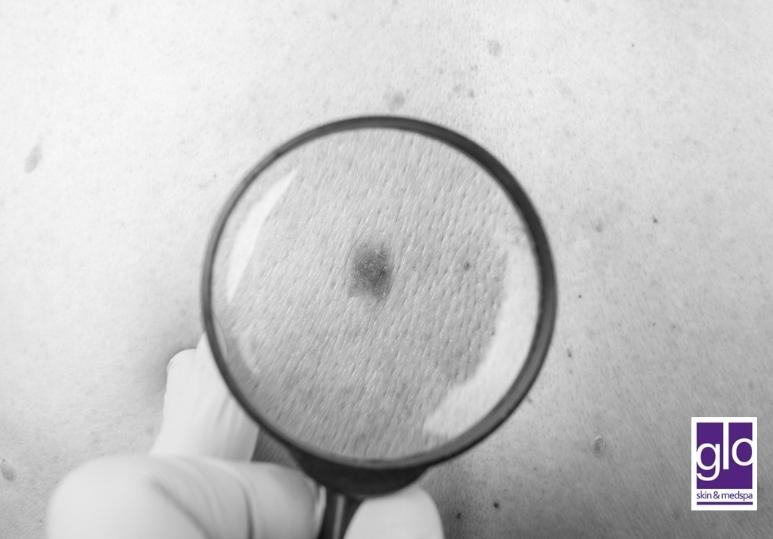1. Changes in Size, Shape, or Colour
One of the most important things to monitor with any mole is whether it changes in size, shape, or colour over time. A healthy mole generally stays the same, so any visible differences could be a sign to take a closer look. For instance:
- Size: If a mole becomes noticeably larger, especially over a short period, it’s wise to have it checked.
- Shape: Healthy moles are usually symmetrical with smooth borders. If a mole develops irregular or uneven edges, it may be a sign of atypical cells.
- Colour: Watch for any colour changes, such as darkening, lightening, or areas where the mole appears to have multiple colours. Consistent colour is usually a sign of a benign mole.
If you notice any of these changes, it could be worth discussing with a professional. Many of these characteristics are part of the ABCDE criteria for assessing moles, which stands for Asymmetry, Border, Colour, Diameter, and Evolving.
2. Itching, Bleeding, or Pain
While most moles are painless, they shouldn’t be uncomfortable. If you experience itching, bleeding, or pain in a mole, it’s time to seek an evaluation. A mole that bleeds or becomes tender without any apparent cause (like injury or friction) may indicate that the cells within it are changing.
Persistent discomfort, especially in a mole that previously didn’t cause issues, is a reason to consider removal. Even if the mole turns out to be benign, these symptoms can still be unpleasant, and removal can provide relief.
3. Location and Irritation
Some moles are located in areas that are more prone to irritation or friction, such as on the face, neck, or where clothing or accessories rub against them. For instance, moles on the shoulders, waistline, or under the bra line can be easily irritated. In such cases, mole removal may be a good option to prevent ongoing irritation or possible injury.
A professional can evaluate the mole and suggest the best approach for removal, ensuring minimal scarring and quick recovery. Removing a mole from a high-friction area can also enhance your comfort and reduce the risk of accidental injury or infection.
4. Cosmetic Concerns
Many people choose to remove moles for cosmetic reasons. A mole on a prominent area like the face, neck, or hands can sometimes affect confidence or self-esteem. If a mole’s appearance is impacting how you feel about yourself, it’s completely reasonable to consider removal.
Modern mole removal techniques are minimally invasive and designed to minimize scarring, allowing you to achieve a smoother skin appearance. At Glo Skin & Medspa, our Edmonton skin clinic will work with you to ensure that mole removal aligns with your aesthetic goals while maintaining skin health.
5. Family or Personal History of Skin Cancer
If you have a family or personal history of skin cancer, it’s especially important to monitor your moles closely. People with a family history of melanoma or other skin cancers are at a higher risk, which means that even slight changes in a mole should be taken seriously.
Regular skin checks with a dermatologist or qualified skincare professional can help you stay proactive. If any moles appear unusual or concerning, removal may be recommended to prevent potential issues from progressing.



